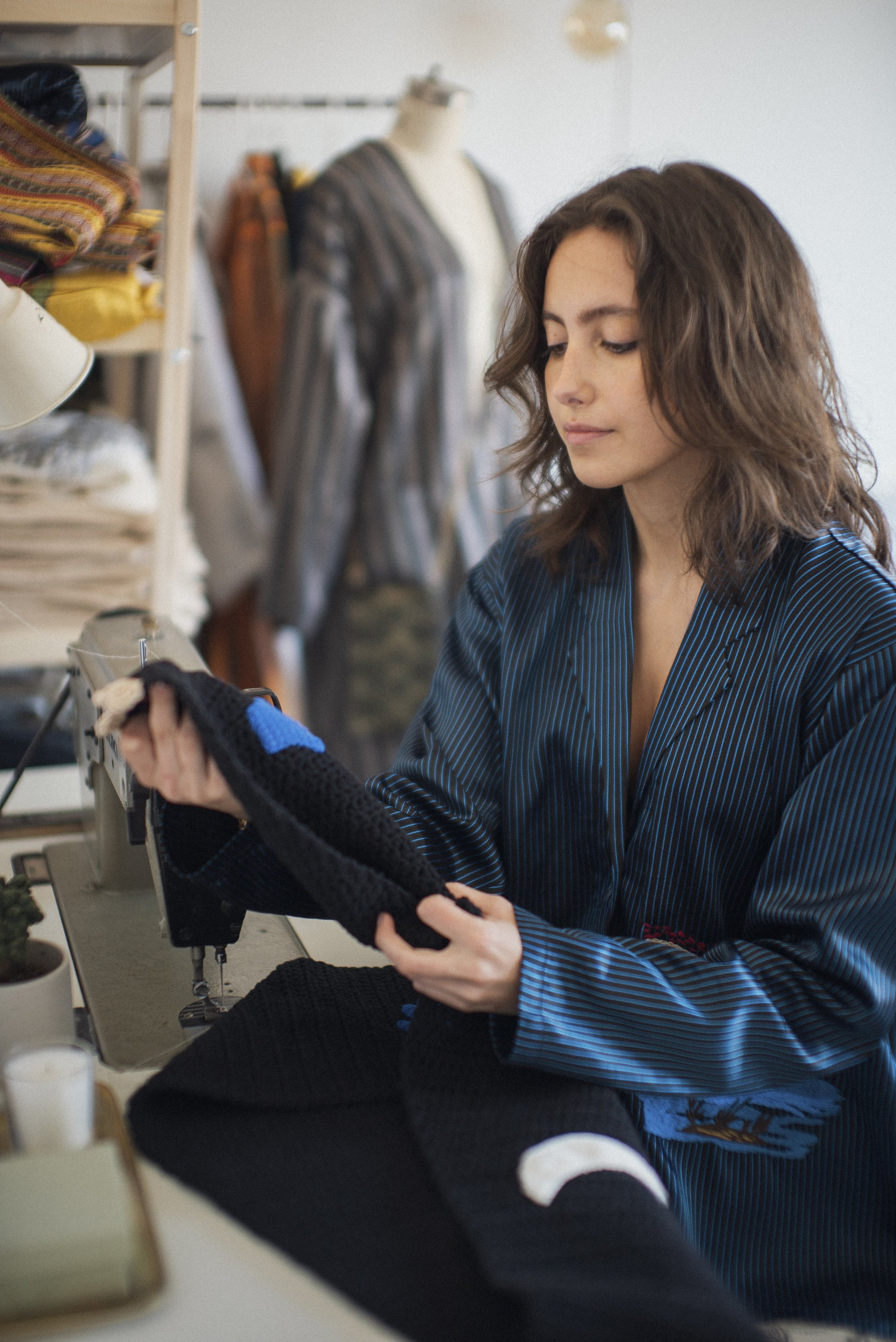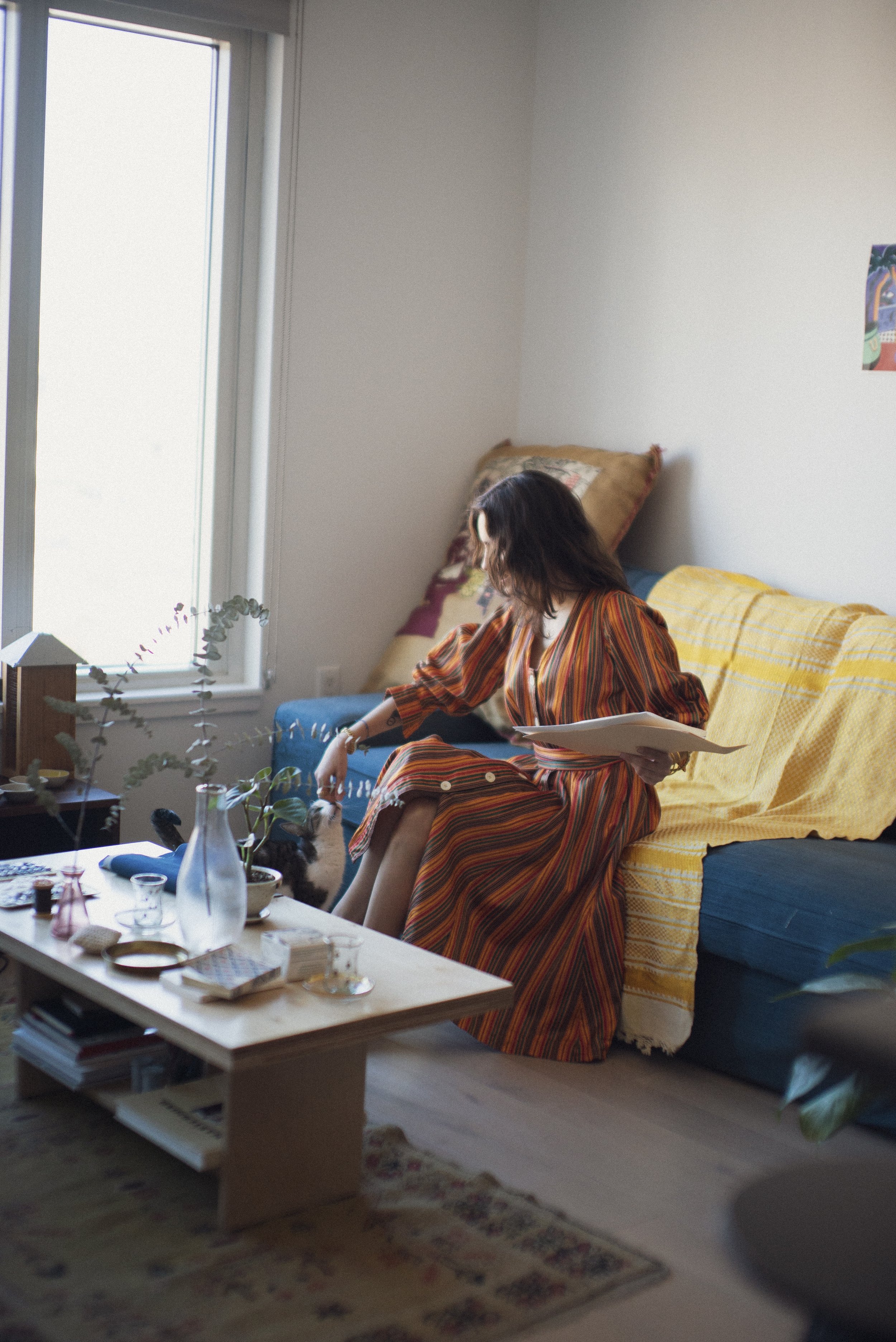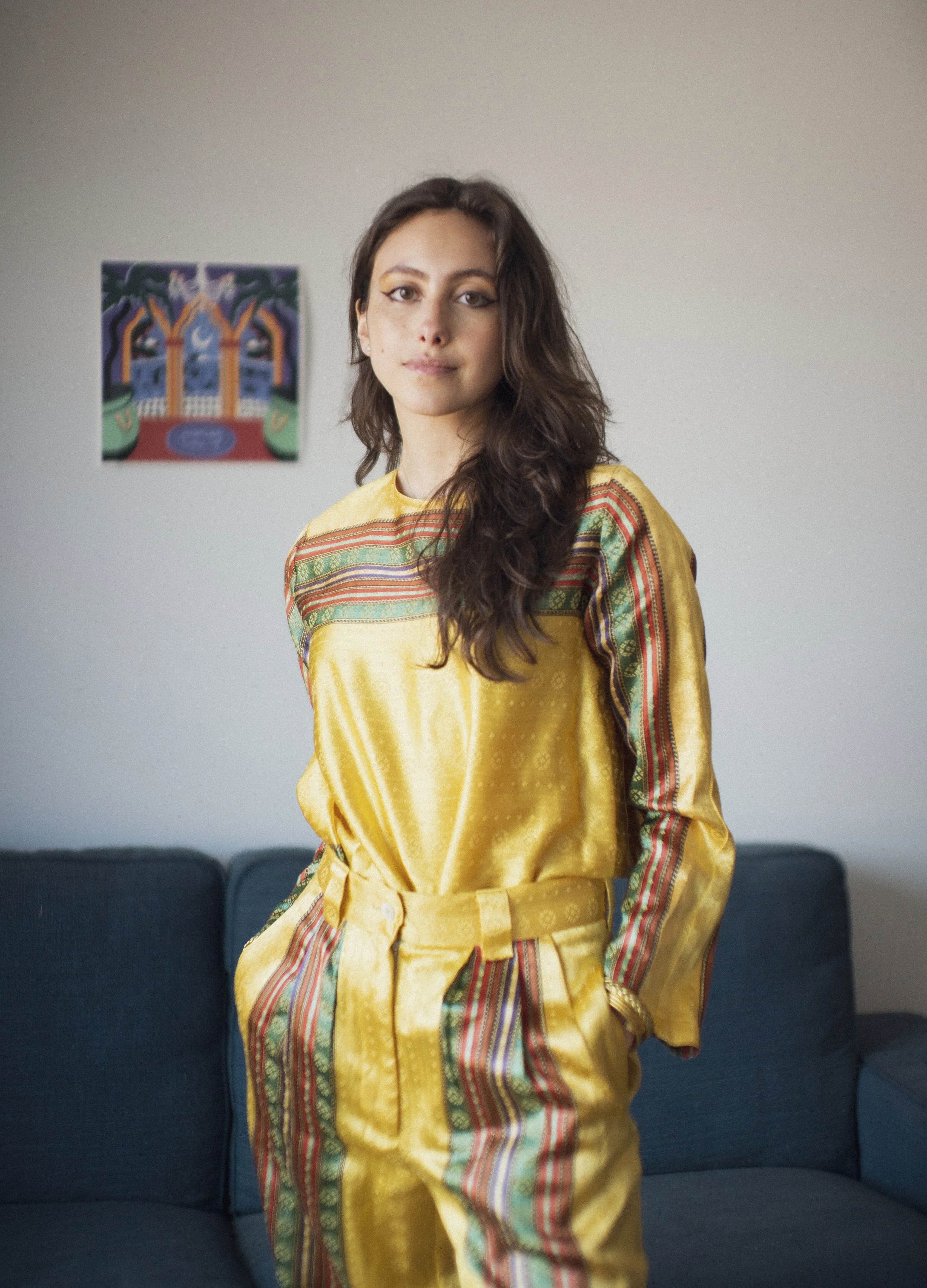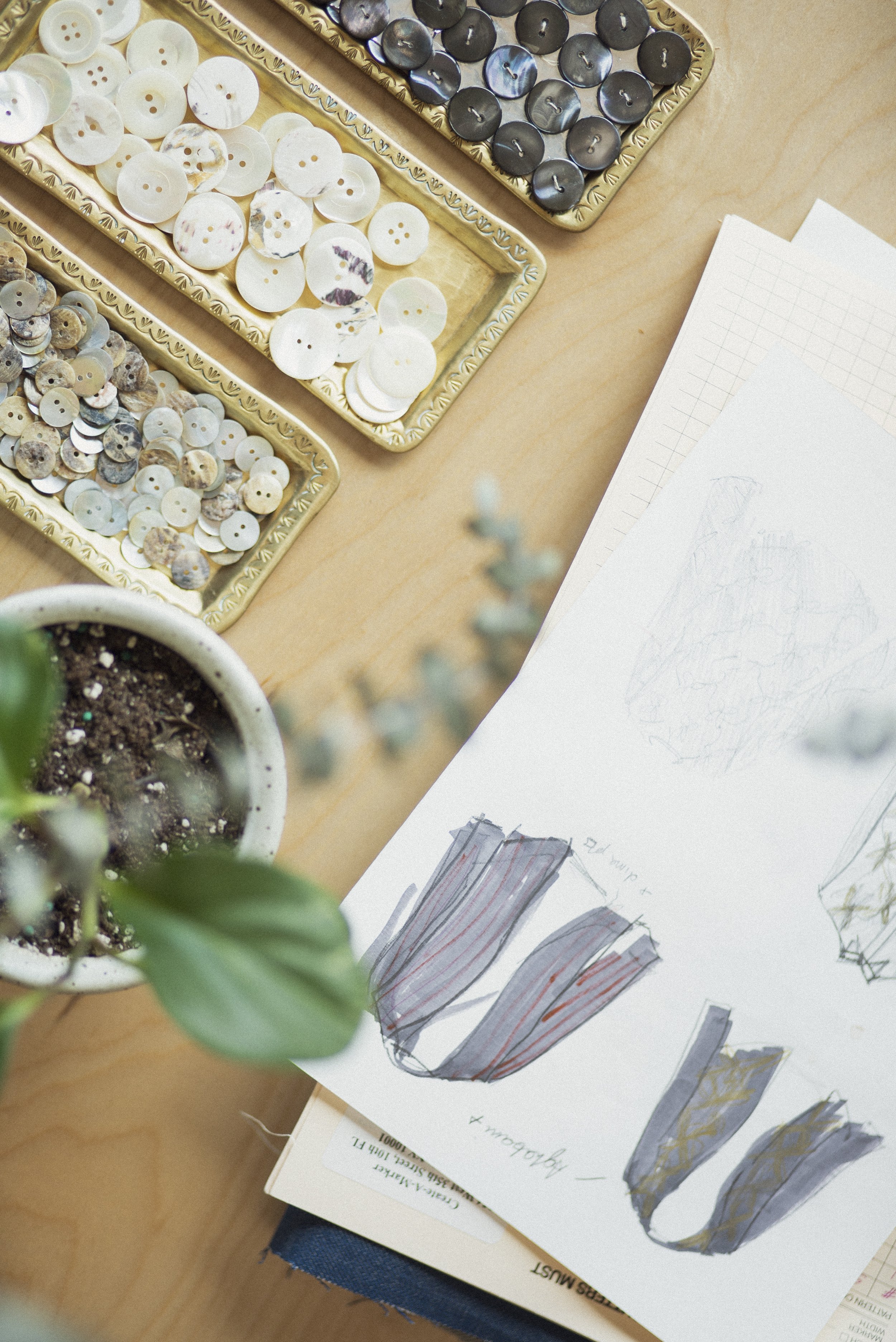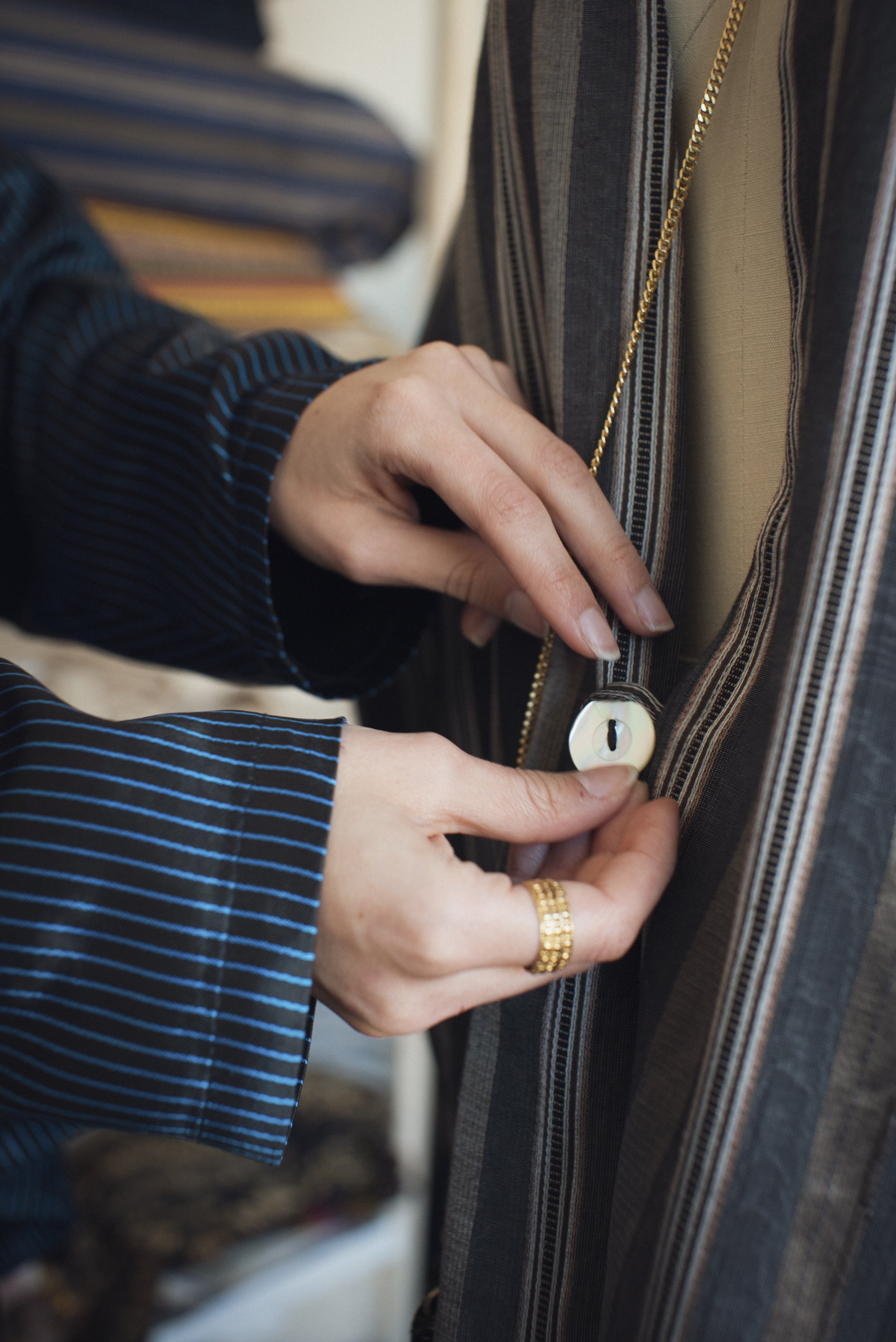Tala Barbotin Khalidy
Designer and founder - Tala Barbotin Khalidy
Tala Barbotin Khalidy is a French Lebanese designer based in New York.
Tala works with Lebanese and Syrian artisans to revitalize local endangered craft techniques while challenging perceptions of the Middle East, one embroidery switch at a time. Across her work as a designer and a business owner Tala also shines a light on the art of mediative embroidery.
Inspired by her grandmother’s Beirut shop as a kid, a shop filled with soaps, herbs, furniture and clothing from Syria and Lebanon, Tala’s work encapsulates her thoughtful disposition of design, culture and beauty.
There is so much we can learn from Tala and her journey
Tala Barbotin Khalidy
Hi Tala, can you tell us a little something about you, your heritage and the inception of your namesake brand?
I am French Lebanese (French dad, Lebanese mother) and grew up in Paris, and when I was a little girl, my Syrian grandmother had her own shop in Beirut and was a designer as well. So when we would visit every summer and during holidays, I spent a lot of time wandering around this shop filled with soaps, herbs, furniture and clothing from Syria and Lebanon, sometimes even playing salesperson and helping wrap customers’ orders. Immersed in these crafts as a child, I came back to them during my years at Parsons School of Design when my grandmother passed, taking a closer look at the richness of textiles from the region and the depth of meaning behind local embroidery motifs and techniques. I then created my namesake brand and sought out to investigate Southwest Asian embroidery techniques: I started working with local artisans in Lebanon and Syria to incorporate these in collections of contemporary clothing that I designed, as a way to perpetuate local crafts, increase jobs in the field, and reintroduce the area to a Western audience through the lens of culture and textiles.
Embroidery is a really big part of your process. I absolutely love the idea of meditative embroidery. What inspired you to consider this process?
I’m a very tactile person, I like touching fabrics, ceramics, surfaces in general, and I started sewing and embroidering when I was very young, to the point where my father would give me his shirts so I could resew the buttons on them when I was only 3 years old.
When I started to embroider again at Parsons, I found that it gave me an unparalleled kind of focus, meditative if you will. I started a pilot program then, to teach embroidery in the context of trauma healing, at first partnering up with NGOs to teach weekly embroidery to domestic violence, human trafficking, and sexual violence survivors in shelters, and then offering workshops in healing centers around New York. While I was skeptical as to wether or not embroidery would have the same effect on others as it did on me, participants were reporting a better mood, increased focus, a greater ability to self-regulate, less panic attacks etc. During the pandemic, these workshops pivoted to online, and I then started a West Asian embroidery series that teaches traditional embroidery techniques from the region to participants, our first workshop being with Wafa Ghnaim of Tatreez and Tea. It's important for customers to also understand the history of the embroidery I work with designing for the brand, as I do research traditional embroidery techniques like Aghabani from Syria or Tark from Baalbak, alongside traditional motifs from the region, and I consider embroidery as an amazing way to celebrate cultural identity. Embroidery and learning how to embroider, adds value to existing clothes, and naturally fosters a greater sense of connection between wearer and garment, as the wearer becomes involved in the process of mending, darning, adding motifs over time. To me, embroidery is both meditative in its process, a link to my heritage, and also a way to celebrate connection and sustainability.
“I started a pilot program then, to teach embroidery in the context of trauma healing, at first partnering up with NGOs to teach weekly embroidery to domestic violence, human trafficking, and sexual violence survivors in shelters, and then offering workshops in healing centers around New York. While I was skeptical as to wether or not embroidery would have the same effect on others as it did on me, participants were reporting a better mood, increased focus, a greater ability to self-regulate, less panic attacks etc. ”
You are passionate about minority representation and responsible storytelling through embroidery and design. Can you tell us a little something about your design process?
I usually start off with picking a theme, something that strikes me as important. For instance, our latest Fall/Winter 22 collection was inspired by the visual language and expressions of Lebanese truck paintings, and while I reinterpreted graphics into embroidery, it was also a commentary on Lebanon’s culture. In the midst of an economic crisis, the roads of a country famous for its 3h long traffic lines were suddenly empty because of a gas shortage, with only these traveling cargo trucks left on the roads. These beautifully adorned trucks, with messages of wisdom on them, sarcasm, love letters, or invitations to kindly or not so kindly give them driving space, that you usually see in glimpses on the road, became extremely appealing to me, and I started to research the history of these truck paintings, every symbol’s significance etc. I started drawing and sketching silhouettes and embroidery motifs inspired by the visual language of the truck paintings, simultaneously thinking of the kind of fabrics that would work with the color palette and motifs. Then I searched through my fabric merchant’s stock of traditional Syrian fabrics looking for the perfect matches, and brought cuts of fabric to get embroidered by our artisans in Lebanon, working with them on execution and design - while also starting the pattern making and sample making process.
Tala Barbotin Khalidy
“I created my namesake brand and sought out to investigate Southwest Asian embroidery techniques: I started working with local artisans in Lebanon and Syria to incorporate these in collections of contemporary clothing that I designed, as a way to perpetuate local crafts, increase jobs in the field, and reintroduce the area to a Western audience through the lens of culture and textiles.”
How do you make mindful moments for yourself?
Tea time! Anyone who knows me, knows that I am a tea aficionado, and in fact I’ve noticed whenever someone wants to gift me something and is on the fence, they bring me tea. I drink green tea in the morning, and herbal teas after 2pm (a lot of them) and the ritual of it brings me a sense of peace. Music and dance are also a huge part of my life. Wether that’s taking dance classes at my favorite studio, going out dancing with friends, or putting on records to listen to in my apartment, I enjoy music in a very mindful and attentive way. I love creative outlets in general, drawing, collaging, embroidery, movement, mixing records… whenever I take up a hobby I tend to commit to it, so I’m always exploring more passions. Whenever I can, I like traveling and exploring new places: most recently I was in Egypt for a friend’s wedding, which was an amazing experience. I also have a cat and when I’m overwhelmed, sometimes she will just sit on my lap and force me to stay still.
Tala Barbotin Khalidy
Can you name some people activists and advocates that have influenced your work or people that you look up to?
I get inspired the most by the other women in my community, for instance, Nourie Flayhan who’s a Lebanese illustrator and creative based in Dubai, Sayran, a Kurdish jewelry designer based in the US, Felukah, an Egyptian rapper and songwriter based in NY.
All these creators from the SWANA community are natural advocates for their people and passionate about social causes, and often times they’re the ones most willing to have a discussion and impart advice with one another. There is no sense of competition, and more so an understanding that if one of us thrives, all of us do, which is quite special. They’re all also uniquely positioned in their crafts, and very unapologetically themselves in their delivery and engagement, which is amazing to see.
Your favourite places in NYC? (I am guessing you live there?)
There are too many places I like, so here are three! One of them is Lion’s Milk, a Turkish cafe in Williamsburg where they have the best simit (a kind of Turkish sweet bagel,) my favorite park is Prospect Park, particularly in the summer, and I am also organizing a pop-up named Portals soon at a neighborhood staple, Playground Coffee in Bed-Stuy, where I’ll be regrouping other femme-owned brands rooted in the SWANA region (follow @portalspopup for more info.).
Do you have any favourite art house Lebanese and Syrian movies? We would love to share your recommendations?
Caramel, by Nadine Labaki, always and forever will be one of my favorite movies, it’s about a beauty salon in Beirut and the women who work there, it’s very touching but also very funny, and a bonus point is that the soundtrack is also incredible.
West Beirut is also a classic film to watch, an account of the Lebanese civil war from the point of view of two young boys.
There’s also A perfect day, by Joana Hadjithomas and Khalil Joreige, which is about 24 hours in the life of a man who has sleep apnea, but centering his relationship with his mother and his girlfriend, it deals with loss and confusion and how it translates into his life.
Also, Shasha Movies, founded by Roisin Tapponi, is a streaming platform dedicated to South West Asian and North African cinema, and is a great way to discover more films from the region.
Your current favourite podcast
Podcast: The Cutting Room Floor by Recho Omondi
Your playlist
My playlist called Printemps Plein Temps or "Full time Spring"
Photographer - Nadia Irshaid Gilbert
Interview - Zeenat Wilkinson


